-
North Carolina War Between the States Sesquicentennial Commission
"Civil War or War Between the States?"
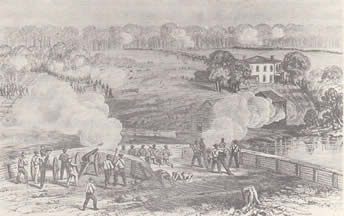
"North Carolina Civil War" or "North Carolina War Between the States" Sesquicentennial?
The great events in history are not necessarily named when they occur, and the eventual
name they go by often has political meaning the victor wishes to convey to posterity.
Not to mention the court historians who are anxious to please their masters. And just as often,
the names for conflicts evolve with changing political realities and contemporary views
to what is deemed acceptable.
By the same token, the Sioux had their own terms for Custer’s campaign and demise on the sacred
soil of their homeland, despite what names Western chroniclers would eventually place on those events.
We can alos expect the Vietnamese to have a different name for the 1950's through 1970's conflict,
and reflecting their particular view of how and why they fought.
Any honest historian will admit that the American Revolution was a civil war with the goal of the colonists
being the taking of political control from the British government. It was two governments vying for
control of the thirteen American colonies and no revolutionary event.
Ironically, the Washington and Adams administrations continued the British theme of government
through 1800, what they had known all their lives, albeit without a king but a head of government
nonetheless. Again, no revolution but a conflict won for control of the one government.
By the same measure, what is termed the American “civil war” was a conflict between two separate
governments – regardless of whether the North wanted to view the Southern Confederacy as a valid
government. Nonetheless, the South had no intention of invading the North and changing
their form of government.
The Northern government initially referred to the conflict as a “rebellion” rather than a civil war, seeing the
Southern people as subjects to the government now in their hands and in rebellion against it.
The Southern view of it being a war between States, coined by Confederate Vice President Alexander
Stephens after the war, was consistent with the Founders’ creation of a federated government of States
which had created a central federal authority with precise delegated authority.
As the Northern States had taken control of the federal agent in Washington with the election of a
sectional party and president, the Southern constituent States decided to withdraw and form a more
perfect union – the North would not allow this, and their secession prompted the Northern invasion.
The troops supplied to Lincoln for this invasion were designated as State military organizations which
helps underscore the meaning of the “War Between the States.”
Regardless of what North Carolinians or other Southerners called the war during 1861-1865, the clearer
view of the immediate postwar led Stephens and the South to see it, and refer to it, as what it was,
a “War Between the States.”
And today, when one uses the term “War Between the States” rather than “civil war,”
it identifies one familiar with Southern history and an honest understanding of it. Those using
the Northern term indicates the acceptance of the Northern interpretation of the conflict,
regardless of accuracy.
Lastly, many say that “civil war,” though inaccurate, should be used for verbal brevity than the
longer “War Between the States.” First, we should be precise and honest with our language and
use it properly so our children are not purposely misled; and two, one only needs to say
“War Between the States” several times to notice how this more accurate term for the conflict
rolls off the tongue. Historical accuracy and honesty must prevail.
"The aggressor in war in not the first who uses force, but the first who renders force necessary."
Henry Hallam (1777-1859) British Historian
![]()
"Civil War"
“A civil war is a war between citizens of the same state contending for control of the same government.
The war between the North and South was the war of the North against a separate government,
that as long as it lasted was a de facto nation, exercising all the powers of an independent government.
The term “civil war” concedes all that the North ever claimed, makes [the South] guilty of treason,
and is untrue to the facts in the case. [The] term “civil war,” while incorrect as a simple
definition of the struggle, does a gross injustice to the South by degrading her struggle for a
national existence into a partisan conflict. I never use it and mark it out of every book
where I find it. Let history tell the truth. Rev. S.A. Steel, Jackson, Tenn.
(“The Phrase “Civil War,” Confederate Veteran, July 1912, pg. 347)

Jefferson Davis on the "Civil War"
"As for allowing the war to be called "The Rebellion" and our Confederate people "Rebels,"
he repudiated and condemned it. "A sovereign cannot rebel," he said, and sovereign States
cannot be in rebellion. You might as well say Germany rebelled against France [in the Franco-Prussian
War], or that France, as she was beaten in the contest) rebelled against Germany."
He said that once in the hurry of writing he had spoken of it as "the civil war,"
but had never used that misnomer again."
(The Davis Memorial Volume, J. Wm. Jones, B.F. Johnson & Co., 1889, pg. 438)
"The English Civil War is rightly so-called since two parties were warring for control of a single state.
By contrast, what is traditionally called -- by the winners -- the American Civil War instead was,
like the American Revolutionary War, a war in which one of the parties wanted to secede from,
rather than acquire control over, the other, which sought to maintain that control."
Antony Flew
“The War Between the States”
“So far as I know, the first use of the term “War Between the States,” on the Northern side,
where the war was proclaimed a rebellion, is to be found in the Supreme Court Reports, 67th U.S. Reports, p. 668.
It was in December, 1862, in the Prize Cases. The Court, having said that neither Congress nor the President
had authority to make war on a State, and said this was a civil war, and then said: “We have shown that
a civil war, as that now waged between the Northern and Southern States, is properly conducted.”
(Capt. S.A. Ashe, Confederate Veteran, June 1930, pg. 211)
How is this then, a North Carolina "Civil War" Sesequicentennial?
During and after the War, Northerners referred to the conflict as “the War of the Rebellion,”
another inaccurate description of the political conflict which persisted to the turn of the century
when “civil war” was used more frequently – but not in the American South.
After the War, the memoirs of General Joseph E. Johnston, Admiral Raphael Semmes and Vice-President
Alexander H. Stephens commonly utilized the term “War Between the States. The United Confederate
Veterans on the late 1890s officially endorsed this terminology for the War. Nothing could better underscore
the correctness of the term that this endorsement by the Southern veterans who fought -- they knew well
who they were fighting and for what reason they went into battle.
A great effort to promote the use of “War Between the States” in public schools was conducted by
the United Daughters of the Confederacy; and the name “War Between the States” is engraved on the
US Marine Corps War Memorial at Arlington Cemetery. Additionally, President Franklin D. Roosevelt
commonly referred to the struggle as “the four year War Between the States.
Without question, it is a North Carolina War Between the States Sesquicentennial
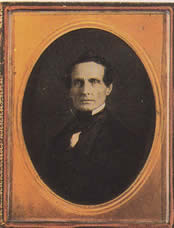
Jefferson Davis on the War
“Many years of agitation had made [Southerners] familiar with the idea of separation.
Nearly two generations had risen to manhood since it had begun to be discussed as a possible alternative.
Few, very few, of the Southern people had ever regarded [secession] as a desirable event,
or otherwise as a last resort for escape from evils more intolerable. It was a calamity, which, however
threatened, they had hoped might still be averted, or indefinitely postponed, and they had regarded
with contempt, rather than anger, the ravings of the party in the North, which denounced the
Constitution and the Union, and persistently defamed their brethren of the South.
Now, however, as well in Virginia and Tennessee, neither of which had yet seceded, as in the more
Southern States, which had already taken that step, the danger so often prophesied was perceived
to be at the door, and eager inquiries were made as to what would happen next –
especially as to the probability of war between the States.”
(Rise and Fall of the Confederate Government, Volume I, Jefferson Davis, pg. 227)
Not a "Civil War"
“The term Civil War is a misnomer. The South did not instigate a rebellion. Thirteen Southern States
in 1860-61 simply chose to secede from the Union and go their own way, like the thirteen colonies
did when they seceded from Britain. A more accurate name for the war that took place between the
northern and southern American States is the War for Southern Independence.
Mainstream historiography presents the victors' view, an account that focuses on the issue of slavery
and downplays other considerations. In a civil war the warring sides battle for control of the central
government. The term "civil war" was coined in England in the 17th century to identify the war fought
between supporters of Charles I and the Parliamentarians led by Oliver Cromwell for control
of the government. The South had no designs on the federal government of the North, headquartered
in Washington, D. C. It did not want to run that government. The breakaway Southern
States asserted their independence, like the American colonies did from Britain
eighty-five years before, formed their own Confederate States of America and placed their
seat of government in Richmond, Virginia.” Dr. Donald W. Miller
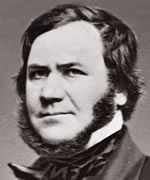
"Literally a War Between the States"
“We are all one now,” said John A. Gilmer, a staunch Unionist, to George Howard, equally staunch Secessionist,
when they heard the news of the firing on Sumter and Lincoln’s call for troops. After the adoption of the Ordinance
of Secession, all factions in North Carolina agreed to bury their differences and unite in defence of the State.
Everywhere there was sincere rejoicing in this new-found unity of parties that had
been fighting each other for a generation.
The coalescing of the political and social forces in the State was accelerated by the practical problems
that confronted North Carolina as a member of the Confederacy. For it was clear by May, 1861, that
peaceable secession was an impossibility. The United States government had already had plans underway
for an invasion of Southern territory not only by Federal forces, but also by volunteers from the States remaining
in the old Union. The struggle was literally to be a war between the States.
North Carolina had taken her place by the side of her Southern sisters and was prepared to throw her whole
strength to their defence. She went out of the old Union reluctantly; she went into the
new Confederacy with enthusiasm.”
(North Carolina, Building an Ancient Commonwealth, Vol. II, 1584-1925, R.D.W. Conner,
American Historical Society, 1929, page 174)
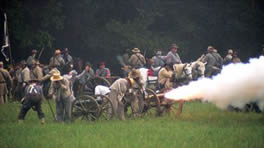
A "Civil War" or War Between the States?
(A letter published in the Boston Transcript of February 13, 1930)
“In searching for the causes of the Civil War, my reading led to many publications, the latest being,
“The Old Free State,” by Landon C. Bell. His stanch opinions, supported by many quotations, may
account for the increasing adoption of the term, “The War Between the States.”
Dr. Bell writes: “Secession was everywhere admitted, from the foundation of the Union up to the eve
of the Civil War; and the position has seldom, if ever, been more clearly stated than by Benjamin J. Williams,
a distinguished writer of Massachusetts.
After pointing out that when the thirteen colonies threw off their allegiance to Great Britain they
became independent States, independent of each other, and that the Article of Confederation
provided that “each State retain its sovereignty, freedom, and independence,” he says: “The Constitution
of the United States, which immediately followed, was first adopted by the States in convention,
each State acting for itself, in its sovereign and independent capacity,
through a convention of its people.
And it was by this ratification that the Constitution was established (to use its own words)
“between the States ratifying the same.”
It is then a compact between the States as sovereigns, and the Union created by it is a federal
partnership of States, the Federal government being their common agent for the transaction of the
federal business within the limits of the delegated powers.”
On page 552, it is stated that Ben Wade, of Ohio, in 1855, said in the United States Senate:
“Who is the judge in the last resort of the violation of the Constitution of the United States by the enactment
of a law? Who is the final arbiter, the general government or the States in their sovereignty? Why, sir,
to yield that point is to yield up all the rights of the States to protect their own citizens, and to
consolidate this government into a miserable despotism.”
(Confederate Veteran, July 1930, pg. 257)
The War Between the States:
“In a newspaper communication, W.O. Hart, of New Orleans, La., refers to a recent action of Congress
regarding the name of the war of the sixties, in which he says:
“At last the Congress of the United States has adopted as the proper name for the war of the sixties
“The War between the States,” and it appears in a report to the Senate on joint resolution No. 41, printed
in the Congressional Record of March 2, 1928, on page 4061.
“The war in question was a war between two sets of States each being arrayed against the other, and
I hope the term may be used in all official documents in the future. We now have the entering wedge
on this point, and the term ought to remain for all time to come.”
(Confederate Veteran, May 1928, page 196)
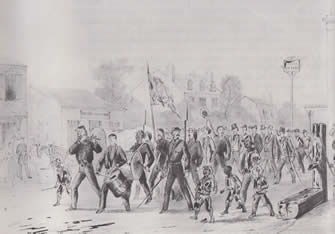
“The War Between the States”
Miss Ida F. Powell, Chairman, UDC Committee appointed to inaugurate a campaign for the use of
“War Between the States” in referring to the conflict in the sixties.
“Prior to 1861 the United States was a confederation of sovereign States, banded together for convenience,
and granting the central government strictly limited and delegated powers. It was a voluntary union of States,
from which any one had the constitutional right to secede. Eleven States, exercising this constitutional right,
withdrew from the Union, and twenty-two Northern States made war upon them to force them back into the Union.
Later the eleven Confederate States were strengthened by the action of Missouri in August, 1861,
and of Kentucky in December, 1861. But while these border States gave loyal service to the Confederacy,
the number of Federal States was increased by the admission into the Union of Kansas in January, 1861,
of West Virginia in 1863, and of Nevada in 1864.
For a period of four years, the Confederate States maintained its own government – Executive, Legislative
and Judicial. It had its own currency, levied and collected taxes, issued bonds, etc., and the struggle
that existed for four years was distinctly a struggle between two recognized governments – the
United States of America and the Confederate States of America.
Therefore it was not a “Civil War,” as that term signifies strife between two parties in one State – one
side fighting for the State, the other side fighting against the authority of that State. Neither was it
a “War of Rebellion,” for sovereign States, co-equal organizations, cannot rebel against each other.
It was not a “War of Secession.” The Southern States seceded peaceably,
exercising their constitutional right to do so.
The war was caused by the North attempting to coerce the South back into the Union. It was not a
“War of Sections,” for brothers often fought against brothers. Both sides were contending for a principle,
for their interpretation of the Constitution.
But it was a “War between the States,” the States that did not secede making war upon the seceding
States to coerce them back into the Union. The term “War between the States” is the term used by
the veterans themselves in Article I of the Constitution of the United Confederate Veterans,
adopted in July, 1890, at Chattanooga, Tenn., Gen. John B. Gordon, Commander in Chief.
Alexander H. Stephens, Vice President of the Confederacy and recognized as one of the ablest thinkers
of his day, entitled his history of the struggle from 1861 and 1865 as
[A Constitutional View of the Late] “….War Between the States.”
Many prominent writers and thinkers have adopted the term “War between the States,”
notably, Charles Francis Adams, of Massachusetts; Dr. Henry Louis Smith, President of Washington
and Lee University; Irvin Cobb, Lady Astor, and Premier Clemenceau of France; and the term has been
officially sanctioned by the Congress of the United States, as appears in the Congressional Record of
March 2, 1928, in a report to the Senate on Joint Resolutions, No. 41.
General Lee wrote: “Every one should do all in his power to collect and disseminate the truth, in the hope
that it may find a place in history and descend to posterity. History is not the relation of campaigns and battles
and generals or other individuals, but that which shows the principles for which the South contended and which
justified her struggle for those principles.”
So let us “disseminate the truth.” Let us stand steadfastly for what we know to be true, and let us live
up to the tribute paid to our Southern people by Senator Hoar, of Massachusetts, when he said: “The Southern
people have inherited from the great race from which they sprung a sense of duty and an instinct of honor….
they have above all, and giving value to all, that supreme constancy which without regard to personal ambition,
without yielding to the temptation of wealth, without getting tired, and without getting diverted, can pursue a
great public object in and out, year after year, and, indeed, generation after generation.”
(The War Between the States, Miss Ida F. Powell, UDC, Confederate Veteran, June 1929, page 233)

“Civil War or War Between the States?”
The Congressional Record of March 2, 1928, reports Senate joint resolution No. 41 wherein Congress
recognized the title “War Between the States.”
“A War was waged from 1861 to 1865 between two organized governments: the United States of America,
and the Confederate States of America. These were the official titles of the contending parties.”
“It was not a “Civil War,” as it was not fought between two parties within the same government.”
It was not a “War of Secession,” for the Southern States seceded without a thought of war.
The right of a State to secede had never been questioned.”
“It was not a “War of Rebellion” for sovereign, independent States, co-equal, can not rebel against each other.”
“It was a “War between the States,” because twenty-two non-seceding States made war upon eleven
seceding States to force them back into the Union of States. It was not until after the surrender of 1865 that
secession was decided to be unconstitutional.”

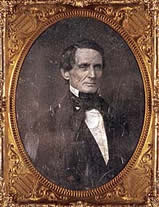
The Issue for Which We Fought
“That we should dare to resort to arms for the preservation of our rights, and “to secure
the blessings of liberty to ourselves and our posterity,” was regarded by our enemies as most improbable.
Their aspirations of dominion, and sovereignty, through the Government of the Union, had become
so deep-seated and real as to cause that Government, at its first step, to assume the haughtiness
and imperiousness of an absolute sovereign.
“I appeal to all loyal citizens to favor, facilitate and aid this effort,” said President Lincoln,
in the first proclamation, calling for seventy-five thousand men. The term “loyal” has no
signification except as applied to the sovereign of an empire or kingdom. In a republic the
people are the sovereign, and the term “loyal” or its opposite can have no signification
except in relation to the true sovereign.
To say, therefore, that the agent of a sovereign people, the representative of the system
they have organized to conduct their common affairs, composed the real sovereign, and
that loyalty or disloyalty is of signification to this sovereign alone, is not only a perversion
of language, but and error, that leads straight to the perversion of all popular government
and the establishment of the monarchical or consolidated form.
The Government of the United States is now the sovereign here, says President Lincoln in
this proclamation, and loyalty consists in the maintenance of that sovereignty against all its foes.
The sovereignty of the people and of the several and distinct States, in his mind, was only
a weakness and enthusiasm of the fathers. The States and people thereof
had become consolidated into a national Union.
“I appeal,” says President Lincoln, “to all loyal citizens to favor, facilitate and aid this
effort to maintain the honor, integrity, and the existence of our national Union.”
This was the usurpation. This lay at the foundation of the war. Every subsequent act
of the Government was another step in the same direction, all tending palpably to
supremacy for the Government of the United States, the subjugation of the States,
and the submission of the people. This was the adversary with whom we had to struggle,
and this was the issue for which we fought. That we dared to draw our swords to
vindicate the rights and the sovereignty of the people . . . was adjudged an
infamous crime, and we were denounced as “rebels.”
(Rise and Fall of the Confederate Government, Vol. II, Jefferson Davis, D. Appleton & Company, 1881, pp. 563-564)

An Honorable Defeat
“Imagine America invaded by a foreign power, one that has quadruple the population and industrial base.
Imagine that this enemy has free access to the world’s goods as well as an inexhaustible supply of cannon
fodder from the proletariat of other countries, while America itself is tightly blockaded from the outside world.
New York and Cincinnati have been taken. For months, Boston and Chicago have been under constant siege,
the civilian population driven from their homes. Enemy forces roam over large parts of the country burning
the homes, tools and food of the non-combatants in a campaign of deliberate terrorism.
Nearly 85 percent of the nation’s able-bodied males (up to 50 years of age) have been called to arms.
Battlefield casualties have run to 39 percent and deaths amount to nearly half of that, far exceeding those of any other war.
On the other hand, the enemy, though its acts and domestic propaganda indicate otherwise, is telling the
American population that it wants only peace and the restoration of the status quo antebellum. Lay down
your arms and all will be as before.
What would be the state of our morale in such conditions? Americans have never suffered such misfortune,
have they? Alas, they have. This was the experience of the Southern people from 1861-1865 in
their lost War for Independence.”
(Clyde Wilson, An Honorable Defeat, Chronicles, October 1998, pg. 28)
Editor's Note:
Without question the use of the terms "Civil War" and "North Carolina Civil War Sesquicentennial"
have been in use for many years and despite their inaccuracy have come to descibe the same as
what we present on the North Carolina War Between the States Sequicentennial website.
Copyright 2012 North Carolina War Between the States Sesquicentennial Commission